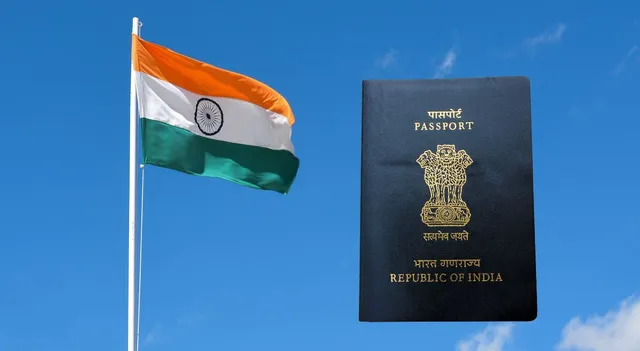- By Ridam Sharma
- Wed, 30 Jul 2025 07:20 PM (IST)
- Source:JND
Indian Passport Colours: The Indian passports come in different colours, and each of these passports with different colours showcases a different, specific category of citizenship, travel purpose and even official stature. The different colours of passports are useful for immigration and customs authorities to easily signify the travel category, allowances, and type of international journey of the passport holder. The main colours used in Indian passports are dark blue, maroon, white, and orange. Let's learn about the different colours of Indian passports, along with the specifications of who is entitled to them.
Which Are The Different Colours Of Indian Passports?
1. Dark Blue Passport
The dark blue coloured passport is the most standard one and is given to most Indian citizens. The blue coloured Indian passport is also referred to as the ordinary or type P passport. It is for people travelling with personal, business, educational or even tourist travel outside India. It is a general requirement of Indian citizenship for foreign travel. Anyone with a 10th pass certificate and standard passport requirements can apply for this category of Indian passport. However, this passport does not grant any special privileges but is classic for easy international travel and return to India.
2. Maroon Passport
The maroon coloured Indian passport is given to Indian diplomats and senior government officials like Indian Foreign Service officers, union ministers, and parliament members on diplomatic missions. It gives passport holders diplomatic immunity and special facilities like fast visa processing and ease of immigration clearance. It also represents the holder's official government position in diplomacy and international relations. In certain situations, family members of diplomats are also given maroon passports.
3. White Passport
The white passport is for Indian government officials visiting abroad, ness covers bureaucrats, IAS and IPS officers, and other official government personnel on official duty. The white coloured Indian passport provides less troublesome immigration clearance and can not be used for personal purposes.
Also Read: How To Apply For An E-Passport? Full List Of 13 Indian Cities To Get First Access To E-Passport
4. Orange Passport
The orange passport was specifically released for Indian nationals who come under the Emigration Check Required (ECR) group. In simple words, this orange coloured Indian passport is meant mostly for people who are not educated more than class 10 and are seeking employment in specific countries and need extra emigration screening. This passport safeguarded ECR holders against foreign exploitation. However, it is important to note that the Indian government stopped issuing fresh orange passports in 2018, and ECR citizens are issued the regular blue passport with ECR status marked.
What's the Difference Between Different Indian Passport Colours and Who Gets Which?
| Passport Colour | Purpose | Issued to | Special Privileges |
|---|---|---|---|
| Dark Blue | Ordinary travel | General Indian citizens | Standard travel document |
| Maroon | Diplomatic missions | Diplomats, senior government officials | Diplomatic immunity, visa facilitation |
| White | Official government travel | Government officials, bureaucrats | Recognised official travel privileges |
| Orange | Emigration check required (discontinued) | Workers with limited education (up to 10th grade) | Additional emigration checks (now merged with the blue passport) |
Also Read: List Of 59 Visa-Free Countries For Indian Passport Holders In 2025
The colour differentiation among Indian passports is to facilitate international travel, by the objective and status of the traveller. The passport colour system provides a balance of security, ease of movement, and safeguarding, so that different types of citizens get easy benefits during their foreign trips.
Finally, the colour of an Indian passport is primarily due to visible and functional reasons, which highlight the travelling purpose, citizenship, or official status, with dark blue for ordinary Indian citizens, maroon for Indian diplomats and white for officials of the Indian government.

